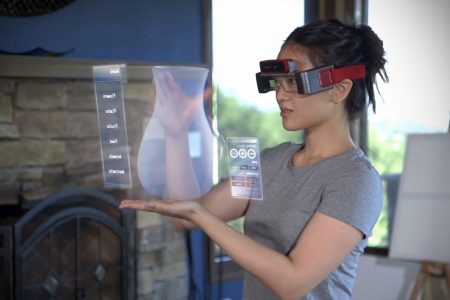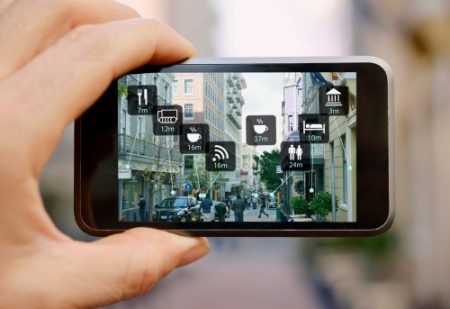May 31, 2017 – We welcome guest blogger, Carl Hanson, who writes about Augmented Reality (AR) and the role he expects it will play in the near future. Hanson contrasts virtual reality (VR), with AR, describing the range of diverse everyday applications where the technology will be used to transform the way we work, play, and view the world. Although interested in enterprise AR platforms, Hanson is particularly drawn to the viability of mass-market AR solutions as well as other technological advances in fields linked to it. This is Hanson’s first posting to 21st Century Tech Blog. Please feel free to comment.
Recently wearables have been under a cloud of sorts with reports of tepid interest and deteriorating sales – particularly for smartwatches. Granted there have been some exceptions, most notably Fitbit’s range of fitness trackers, but these are few and far between.
The one silver lining that may very well rejuvenate wearables and transform them completely is a renewed interest in Augmented Reality (AR).
Resurgence in AR
Ever since the Google Glass AR headset project was shuttered, AR seemed to go into the doldrums. Most notably AR could be seen in Snapchat filters that overlay images on video message faces. And AR was also to be found in video games such as Niantic’s Pokemon Go.
Due to these applications, fully immersive AR has resurfaced with big names such as Microsoft, Google, Apple and Facebook all invested. Some of these companies will undoubtedly center on applications for devices such as smartphones. But ultimately some form of wearable AR such as a successor to Google Glass will become the preferred platform for delivery.
Role of Wearables in Immersive AR
Why wearable glasses are the preferred AR delivery tool lies in their simplicity for delivering information to the wearer’s field of vision. Wearing AR glasses gives the user the ability to point to an object and receive information about it in an unobtrusive way.
But glasses aren’t the only type of wearable for the budding AR world. Any AR wearable can provide sensory information and feedback. That includes watches, rings, audio devices, footwear, and clothing. AR wearables can measure or track specific data, and provide other functionality such as GPS, video capture, and movement tracking.
Are we there yet?
Not really. Today the focus remains on wearable devices for the eyes with Microsoft’s Hololens, Magic Leap’s AR glasses, Solos AR Glasses, Vuzix M300, Meta AR (seen in image below), and others appearing in the market. Most remain in the experimental phase.

Apple in its typical fashion has adopted a different approach to AR. Initially, the company’s focus is primarily smartphone-based (see image below) with integration from existing wearables such as the new Air Pods and Apple Watch. Ultimately, however, an Apple Glasses is bound to come to market with the typical Apple twist.
What About Fully Immersive AR?
Although AR has made significant strides in the last few years, fully immersive AR remains a distant prospect. Notable challenges remain. For example, the technology needs to miniaturize the components and power sources to make them virtually invisible. A decade from now we may see the integration of AR wearables into our everyday lives. But more likely, AR’s initial success will be in play environments where adoption of wearables is already readily accepted. Just look to VR game technology today to see the short-term direction AR may follow.









